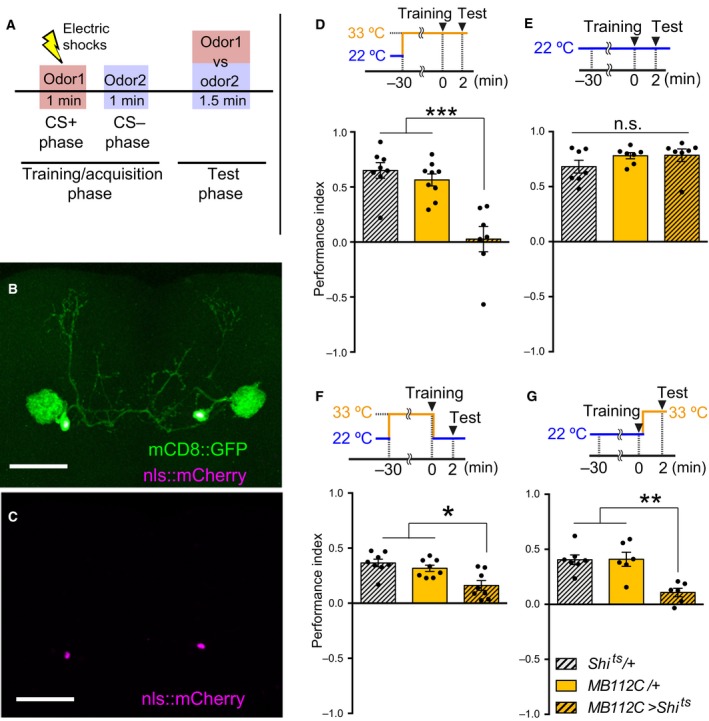Figure 1.

MBON‐γ1pedc is required for both acquisition and retrieval of STM. (A) Olfactory aversive memory assay scheme. At the training/acquisition stage, one odor (CS+) is delivered to flies with 12 electric shocks, and another odor (CS−) is delivered without a shock for 1 min. After that, flies are allowed to choose between the CS+ odor and CS− odor at the test stage. (B–C) MB112C split‐Gal4 expressing UAS‐mCD8::GFP and UAS‐nls::mCherry labeled single pair of MBON‐γ1pedc. Scale bars, 50 μm. (D) Blocking synaptic outputs from MBON‐γ1pedc during the training and test stages impaired short‐term memory (STM) (ANOVA, n = 8, 9, 7). Flies were preheated at the restrictive temperature (33 °C) before training for 30 min, followed by training and testing at 33 °C. (E) Flies showed no deficit in STM at the permissive temperature (22 °C). Flies expressing Shits in MBON‐γ1pedc showed no significant memory deficits compared to the relevant Gal4 or UAS‐Shits controls (Kruskal–Wallis, n = 7, 7, 7). Flies were trained and tested at 22 °C. (F) Blocking synaptic outputs from MBON‐γ1pedc at the training stage impaired STM (ANOVA, n = 8, 8, 8). Flies were preheated at 33 °C before training for 30 min, followed by training at 33 °C. Immediately after the training, flies were transferred to 22 °C and tested at 22 °C. (G) Blocking synaptic outputs from MBON‐γ1pedc at the test stage impaired STM (ANOVA, n = 7, 6, 6). Flies were trained at 22 °C, followed by a transfer to 33 °C and testing at 33 °C. (D‐G) All bar graphs show the mean ± SEM, and dots show individual trials. *: P < 0.05, **: P < 0.01, ***: P < 0.001, n.s.: P > 0.05.
